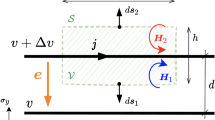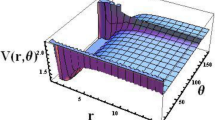Abstract
A. BLOCH1 recently extended to complex coefficients Lucas's method2 of the solution of polynomial equations with the aid of an electrolytic tank. Points of the tank represent complex numbers either directly or after a conformal transformation. In the extended method, sinusoidal currents, in complex vector notation proportional to the residues of a certain rational function with simple poles, are impressed at points corresponding to these poles. Then the points at which the electric field is circularly polarized correspond to the roots of the polynomial equation. The root-points can be found by exploring the tank systematically.
This is a preview of subscription content, access via your institution
Access options
Subscribe to this journal
Receive 51 print issues and online access
$199.00 per year
only $3.90 per issue
Buy this article
- Purchase on Springer Link
- Instant access to full article PDF
Prices may be subject to local taxes which are calculated during checkout
Similar content being viewed by others
References
Bloch, A., VIIth International Congress of Applied Mechanics, 4, Paper No. 28, 324 (London, 1948).
Lucas, F., C.R. Acad. Sci., Paris, 106, 645 and 1072 (1888).
Hansen, W. W., and Lundstrom, O. C., Proc. Inst. Rad. Eng., 33, 528 (1945).
Boothroyd, A. R., Cherry, E. C., and Makar, R., Proc. Inst. Elec. Eng., Pt. 1, 96, No. 99 (May 1949).
Author information
Authors and Affiliations
Rights and permissions
About this article
Cite this article
TASNY-TSCHIASSNY, L., DOE, A. Solution of Polynomial Equations with the Aid of the Electrolytic Tank. Nature 168, 702–703 (1951). https://doi.org/10.1038/168702b0
Issue Date:
DOI: https://doi.org/10.1038/168702b0
Comments
By submitting a comment you agree to abide by our Terms and Community Guidelines. If you find something abusive or that does not comply with our terms or guidelines please flag it as inappropriate.



